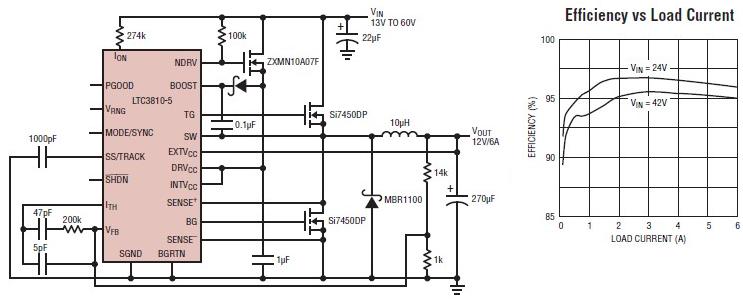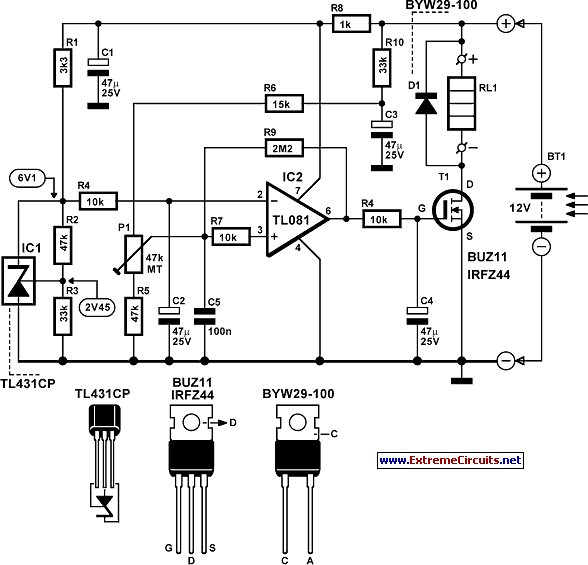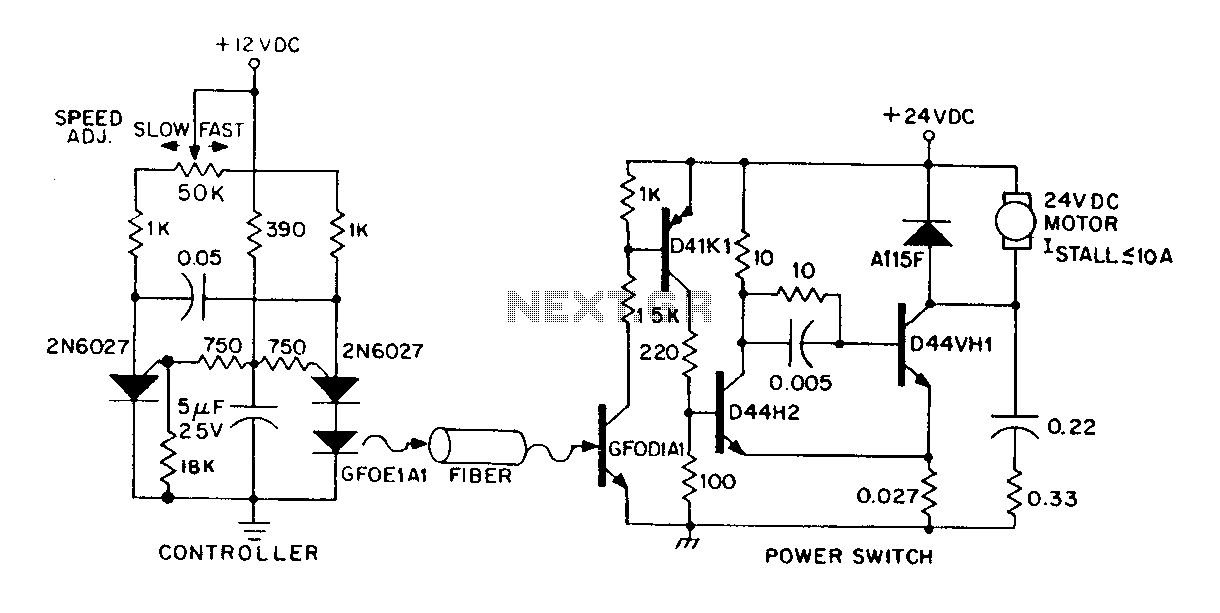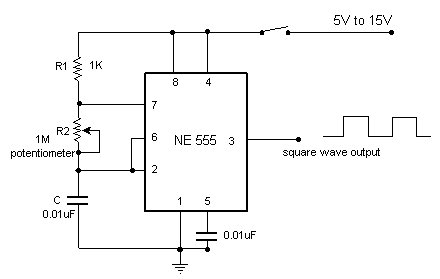
ceiling fan regulator motor speed
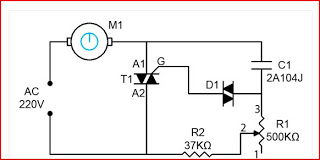
This is a simple ceiling fan regulator circuit diagram. It is used to control the speed of a ceiling fan. In other words, it is an AC motor speed controller circuit, as it controls the speed of an AC motor (ceiling fan). This ceiling fan regulator circuit is built with a few components. The circuit is primarily based on the Z0607 TRIAC, which is a low-power AC semiconductor device commonly used for controlling the speed of low-power AC motors. In this ceiling fan regulator circuit, R1=500K is a variable resistor that is used to adjust the fan speed. Capacitor C1 2A104J is a polyester film capacitor.
The ceiling fan regulator circuit operates on the principle of phase control, allowing for the adjustment of the voltage supplied to the ceiling fan motor, thereby modulating its speed. The Z0607 TRIAC acts as a switch that can turn on and off the current flow to the motor, effectively controlling its speed based on the phase angle of the AC waveform.
The variable resistor (R1) allows the user to fine-tune the amount of current reaching the motor, providing a range of speed settings from low to high. The capacitor (C1) is essential for stabilizing the circuit and ensuring smooth operation. It helps in filtering out voltage spikes that could potentially damage the TRIAC or the motor.
In summary, this circuit is an efficient and simple solution for controlling the speed of ceiling fans, utilizing minimal components while providing reliable performance. The use of the TRIAC enables effective control of AC power, making it suitable for various applications where speed regulation of AC motors is required.This is a simple ceiling fan regulator circuit diagram. It is used to control the speed of a ceiling fan. In the other words it is an AC motor speed controller circuit, as because its control the speed of a AC motor(Ceiling Fan). This ceiling fan regulator circuit built with few numbers of parts. The circuit mainly based on Z0607 TRIAC. This is a low power AC semiconductor device. Generally which is used to controlling speed of low power ac motor speed. In this ceiling fan regulator circuit, R1=500K is a variable resistor that is used to adjust the fan speed. Capacitor C1 2A104J is a Polyester film capacitor. Parts List Ceiling Fan Motor Speed Controller circuit: 🔗 External reference
The ceiling fan regulator circuit operates on the principle of phase control, allowing for the adjustment of the voltage supplied to the ceiling fan motor, thereby modulating its speed. The Z0607 TRIAC acts as a switch that can turn on and off the current flow to the motor, effectively controlling its speed based on the phase angle of the AC waveform.
The variable resistor (R1) allows the user to fine-tune the amount of current reaching the motor, providing a range of speed settings from low to high. The capacitor (C1) is essential for stabilizing the circuit and ensuring smooth operation. It helps in filtering out voltage spikes that could potentially damage the TRIAC or the motor.
In summary, this circuit is an efficient and simple solution for controlling the speed of ceiling fans, utilizing minimal components while providing reliable performance. The use of the TRIAC enables effective control of AC power, making it suitable for various applications where speed regulation of AC motors is required.This is a simple ceiling fan regulator circuit diagram. It is used to control the speed of a ceiling fan. In the other words it is an AC motor speed controller circuit, as because its control the speed of a AC motor(Ceiling Fan). This ceiling fan regulator circuit built with few numbers of parts. The circuit mainly based on Z0607 TRIAC. This is a low power AC semiconductor device. Generally which is used to controlling speed of low power ac motor speed. In this ceiling fan regulator circuit, R1=500K is a variable resistor that is used to adjust the fan speed. Capacitor C1 2A104J is a Polyester film capacitor. Parts List Ceiling Fan Motor Speed Controller circuit: 🔗 External reference
